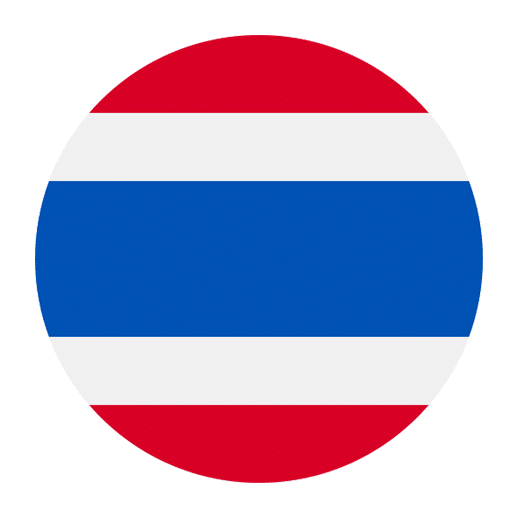Thailand is a country renowned for its rich cultural heritage, and one of the most fascinating aspects of this heritage is its architecture. From the majestic temples of Bangkok to the traditional wooden houses in the countryside, Thai architecture is a tapestry of history, culture, and artistry. If you’re a language learner looking to deepen your understanding of Thai culture, learning the vocabulary related to architectural features can be both rewarding and enlightening. In this article, we will explore various Thai words that describe architectural features, giving you a glimpse into the intricate world of Thai architecture.
Basic Architectural Terms
Before diving into the specific features, it’s essential to familiarize yourself with some basic architectural terms in Thai. These foundational words will help you understand more complex structures and descriptions.
1. **อาคาร** (a-khan): Building
2. **บ้าน** (baan): House
3. **วัด** (wat): Temple
4. **ศาลา** (sa-la): Pavilion
5. **พระอุโบสถ** (phra-u-bo-sot): Main ordination hall in a temple
Traditional Thai Houses
Traditional Thai houses, or **เรือนไทย** (ruen Thai), are a significant part of Thailand’s architectural heritage. These houses are known for their distinctive features, which include raised platforms, steep roofs, and intricate woodwork.
1. **เรือน** (ruen): House
2. **ชาน** (chan): Terrace or veranda
3. **หลังคา** (lang-kha): Roof
4. **เสา** (sao): Pillar or column
5. **หน้าต่าง** (na-tang): Window
6. **ประตู** (pra-too): Door
7. **บันได** (ban-dai): Staircase
8. **ไม้สัก** (mai sak): Teakwood
Traditional Thai houses are often elevated on stilts, known as **เสา** (sao), to protect against flooding and provide ventilation. The **ชาน** (chan), or terrace, is a crucial feature where families spend a lot of their time. The **หลังคา** (lang-kha), or roof, is typically steep and designed to efficiently shed rainwater. **ไม้สัก** (mai sak), or teakwood, is commonly used in the construction of these houses due to its durability and resistance to insects.
Thai Temples and Religious Structures
Thai temples, or **วัด** (wat), are some of the most iconic architectural structures in Thailand. These temples are not only places of worship but also cultural landmarks that showcase the country’s artistic and architectural prowess.
1. **เจดีย์** (che-di): Stupa or pagoda
2. **พระปรางค์** (phra prang): Khmer-style tower
3. **วิหาร** (wi-han): Assembly hall
4. **พระอุโบสถ** (phra-u-bo-sot): Main ordination hall
5. **ศาลา** (sa-la): Pavilion or open-sided structure
6. **พระพุทธรูป** (phra-phut-tha-rup): Buddha image/statue
7. **บันไดนาค** (ban-dai nak): Naga staircase
8. **โบสถ์** (bot): Chapel
The **เจดีย์** (che-di), or stupa, is a common feature in Thai temples, often containing relics of the Buddha. Another notable structure is the **พระปรางค์** (phra prang), a tower inspired by Khmer architecture, often found in central Thailand. The **วิหาร** (wi-han) serves as an assembly hall where monks and laypeople gather for ceremonies. The **พระอุโบสถ** (phra-u-bo-sot) is the main ordination hall, where important rituals, such as ordinations, take place. The **บันไดนาค** (ban-dai nak) is a staircase adorned with naga, or serpent, sculptures, symbolizing protection.
Architectural Elements and Decorations
Thai architecture is known for its intricate decorations and symbolic elements. Learning the vocabulary for these features can help you appreciate the artistry and cultural significance behind them.
1. **ลายไทย** (lai Thai): Thai pattern/design
2. **หน้าบัน** (na-ban): Gable
3. **หน้าจั่ว** (na-jua): Gable apex
4. **ช่อฟ้า** (cho-fa): Decorative finial on the gable apex
5. **หางหงส์** (hang-hong): Swan tail ornament
6. **บานประตู** (ban-pra-too): Door panel
7. **บานหน้าต่าง** (ban-na-tang): Window panel
8. **โครงสร้าง** (khrong-sang): Structure
The **ลายไทย** (lai Thai), or Thai pattern, is a distinctive decorative element often found in various architectural features, from walls to furniture. The **หน้าบัน** (na-ban) and **หน้าจั่ว** (na-jua) are parts of the gable, with the **หน้าบัน** (na-ban) being the triangular section and the **หน้าจั่ว** (na-jua) being the apex. The **ช่อฟ้า** (cho-fa) is a finial resembling a bird or a serpent, often adorning the gable apex. The **หางหงส์** (hang-hong), or swan tail ornament, is another decorative element often seen on the edges of the roof.
Modern Thai Architecture
While traditional Thai architecture remains a significant part of the country’s identity, modern Thai architecture has also made its mark. Modern buildings often blend traditional elements with contemporary design, creating a unique architectural style.
1. **ตึกสูง** (tuek-sung): High-rise building
2. **คอนโดมิเนียม** (kon-do-mi-ni-am): Condominium
3. **สำนักงาน** (sam-nak-ngan): Office
4. **ห้างสรรพสินค้า** (hang-sap-pha-sin-kha): Shopping mall
5. **โรงแรม** (rong-raem): Hotel
6. **อพาร์ตเมนต์** (a-part-men): Apartment
7. **พื้นที่สาธารณะ** (phuen-thi sa-tha-ra-na): Public space
8. **สิ่งอำนวยความสะดวก** (sing-am-nuai-khwam-sa-duak): Amenities
Modern Thai architecture often includes **ตึกสูง** (tuek-sung), or high-rise buildings, which dominate the skylines of cities like Bangkok. **คอนโดมิเนียม** (kon-do-mi-ni-am), or condominiums, are popular residential choices for urban dwellers. **สำนักงาน** (sam-nak-ngan), or offices, and **ห้างสรรพสินค้า** (hang-sap-pha-sin-kha), or shopping malls, are also common features in modern Thai cities. Despite the modernity, many of these buildings incorporate traditional elements, such as **ลายไทย** (lai Thai) patterns or **ช่อฟ้า** (cho-fa) finials, blending the old with the new.
Special Architectural Terms
To fully appreciate the depth of Thai architecture, it’s beneficial to learn some specialized terms that may not be as commonly known but are equally important.
1. **จั่ว** (jua): Gable roof
2. **คันทวย** (khan-thuai): Bracket
3. **หน้ามุข** (na-muk): Porch or portico
4. **ปั้นลม** (pan-lom): Ventilator
5. **มุขเด็จ** (muk-det): Royal porch
6. **เหล็กดัด** (lek-dat): Iron grill
7. **กระเบื้อง** (kra-bueng): Tile
8. **วงกบ** (wong-kob): Door/window frame
The **จั่ว** (jua) is a type of gable roof commonly seen in traditional Thai houses. The **คันทวย** (khan-thuai) is a bracket that supports the roof, often elaborately carved. The **หน้ามุข** (na-muk) serves as a porch or portico, providing a welcoming entrance to a building. The **ปั้นลม** (pan-lom) is a ventilator that allows for air circulation, crucial in Thailand’s tropical climate. The **มุขเด็จ** (muk-det) is a royal porch, often found in palaces and significant buildings. The **เหล็กดัด** (lek-dat) is an iron grill used for security and decoration. **กระเบื้อง** (kra-bueng) refers to tiles used in roofing or flooring, while **วงกบ** (wong-kob) denotes the frame of a door or window.
Conclusion
Learning the vocabulary for architectural features in Thai not only enriches your language skills but also deepens your appreciation for Thailand’s cultural and historical heritage. From the elevated **เรือนไทย** (ruen Thai) houses to the intricately decorated **วัด** (wat) temples, Thai architecture is a testament to the country’s artistry and ingenuity. By familiarizing yourself with these terms, you can gain a more profound understanding of the structures that define Thailand’s landscape and the cultural significance they hold.
Whether you’re exploring the bustling streets of Bangkok or the serene countryside, you’ll find that Thai architecture offers a unique glimpse into the soul of the nation. So, the next time you find yourself admiring a **เจดีย์** (che-di) or walking through a traditional **บ้าน** (baan), you’ll have the words to describe the beauty and craftsmanship that make Thai architecture truly extraordinary.

